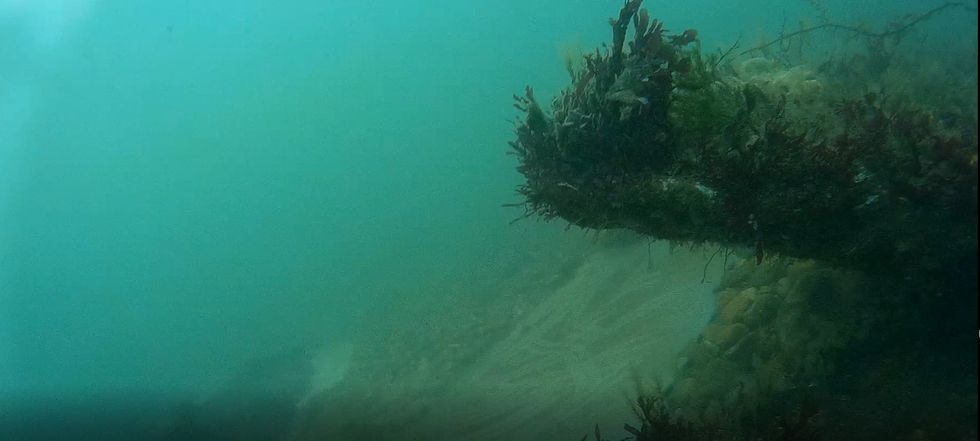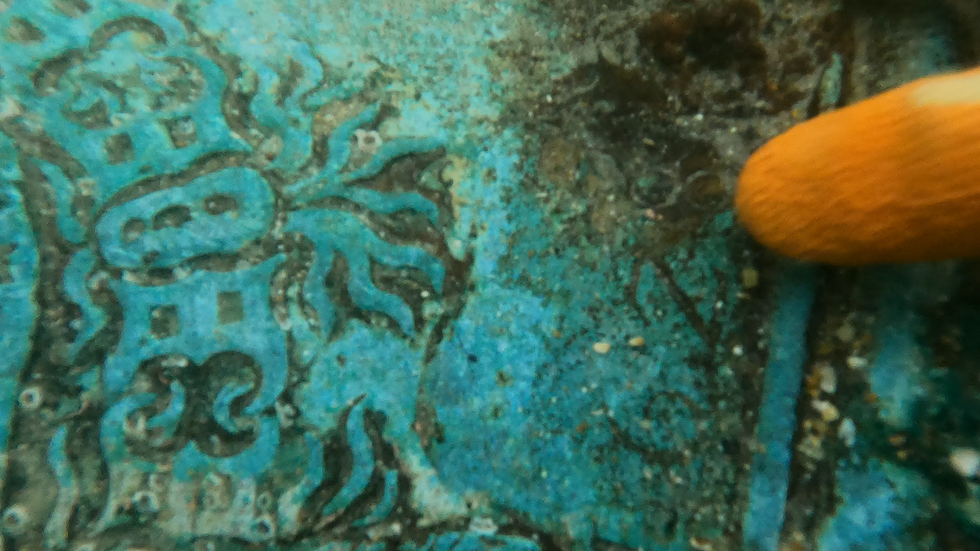
A medieval shipwreck lying off the coast of Dorset has been granted the highest level of legal protection to preserve it for future generations.
Known as the “Mortar wreck”, the 13th century vessel was discovered in the waters of Poole Bay in 2020 by local diver Trevor Small, and is the oldest known wreck where the remains of the hull are still visible.
It was given its name because of the mortar bowls used for grinding grain that were among the first artefacts found on the site.
Tree-ring dating of the ship’s timbers has revealed it was constructed from Irish oak trees felled between 1242 and 1265, during the reign of King Henry III.
There are no other known wrecks of seagoing ships from the 11th to the 14th century in English waters, although two bronze-age wrecks have been discovered in Devon and Kent.
The rest is history. I've found one of the oldest shipwrecks in England
Trevor Small
It is one of three vessels to be designated protected wreck sites under the Protection of Wrecks Act 1973 by the Department for Digital, Culture, Media and Sport (DCMS) on Wednesday.
It means that divers need to request a licence from the DCMS before diving on the sites in order to protect the structures and the artefacts within them.
The Mortar wreck and two sites dating from the 16th and the 17th century off Needles Channel near the Isle of White were given protected status on the advice of public body Historic England.
As well as the mortars, two pristine pre-carved gravestones made from Purbeck stone were found on the site, both featuring a different gothic design.
Stone mortars and cookware found on the Mortar wreck in Dorset (Bournemouth University/PA)
One depicts a wheel headed cross and the other has a splayed arm cross – both of which were common 13th century styles.
These types of gravestones were a mark of high status and are found in churchyards across the south coast.
Also found was large cauldron for cooking soup, and a smaller cauldron for heating water.
Mr Small, who has 30 years experience diving Dorset’s waters, said: “I was born into a seafaring family. I’ve skippered thousands of sea miles looking for shipwrecks from my home port of Poole.
“In summer 2020, I discovered what I believed to be an undetected wreck site. Recent storms had revealed something unknown on the seabed. I was granted permission to dive the wreck.
“The rest is history. I’ve found one of the oldest shipwrecks in England.”
It is not known where the vessel was headed or how it came to grief, but Mr Small, Historic England and a team of archaeologists from Bournemouth University continue to investigate the wreck.
Maritime archaeologist Tom Cousins, who is part of the team at Bournemouth University studying the wreck, said: “Very few 750-year-old ships remain for us to be able to see today and so we are extremely lucky to have discovered an example as rare as this, and in such good condition.
“A combination of low-oxygenated water, sand and stones has helped preserve one side of the ship, and the hull is clearly visible.”

The other two vessels, the 16th century Shingles Bank Wreck NW96 and 17th century Shingles Bank Wreck NW68, were found by divers Martin Pritchard and Dave Fox in 2020.
Surviving wrecks dating pre-1700 is extremely rare, Historic England said, as is finding previously unrecorded wrecks in the Solent, which is a busy shipping route.
It is believed that both of these vessels became stranded on the Shingles Bank in Needles Channel – a well-known hazard – before sinking.
Several cannons, a large anchor, and more than 50 very large lead ingots and stone cannonballs have been found at the NW96 site.

The ingots would have been used as a commodity for trading purposes, and would have been melted down to make a variety of products including bullets, lead flashing on roofs and pipes, Historic England said.
The technique used to cast the ingots fell out of use around 1580, while stone cannon balls were replaced with iron shot by the end of the 16th century.
The finds suggest the wreck dates from the 16th or very late 15th century.
One of the cannons found on the NW68 site was was cast in Amsterdam between 1621 and 1661, dating the vessel to the mid to late 17th century.
Archaeologists believe it could have participated in the Battle of Portland in 1653, when the fleet of the Commonwealth of England was attacked by the Dutch Republic during the First Anglo-Dutch War.
The two sides were locked in a struggle for supremacy over the Channel.













